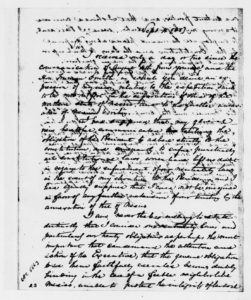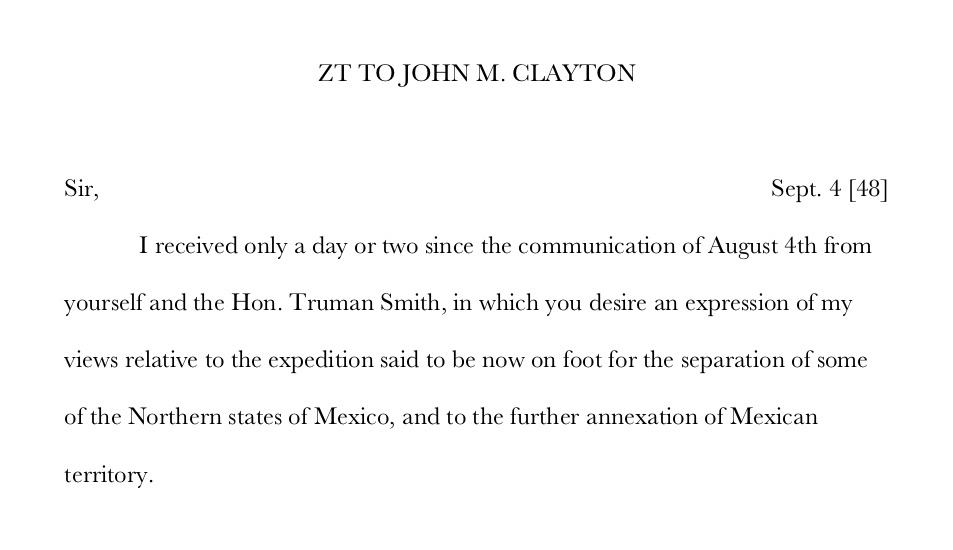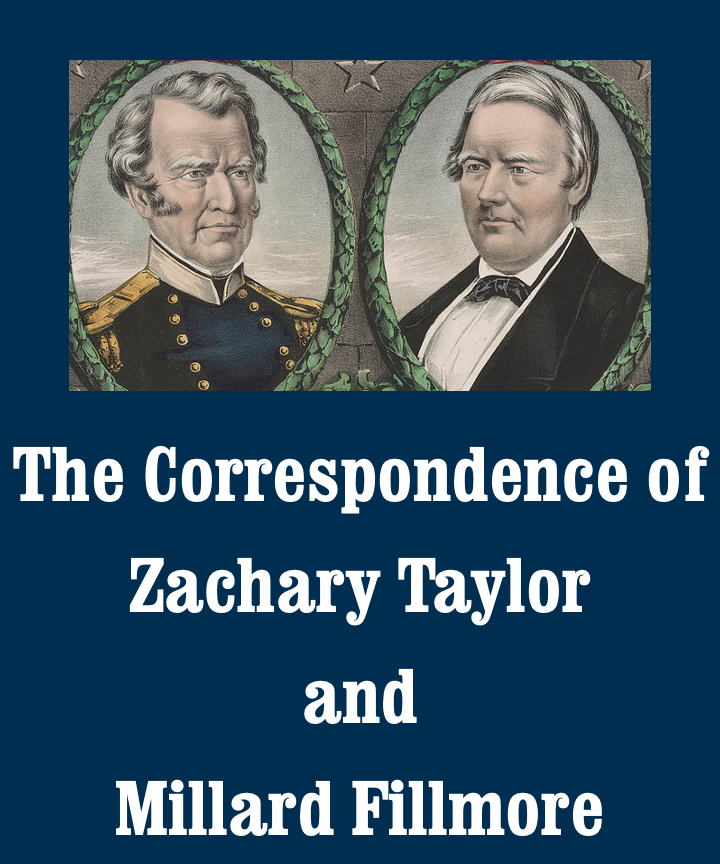Welcome! Over the past several weeks, we’ve begun this new project to edit the twelfth and thirteenth U.S. presidents’ letters. Like other activities of American University’s Center for Congressional and Presidential Studies (CCPS), this one is committed to ties between scholarly research and public education. In the coming years, we’ll publish thousands of historical documents, heretofore inaccessible to most readers. Students, teachers, scholars, and all interested in U.S. history will be able to learn about the 1840s and 1850s from the words of two presidents and of the diverse men, women, and children who wrote to them.
We begin, of course, in strange times. Zachary Taylor entered the White House in 1849 amid a global cholera pandemic. That disease claimed the lives of nearly one-tenth the populations of some U.S. cities. Even Taylor’s predecessor, James K. Polk, succumbed to it soon after returning home from Washington. The Correspondence of Zachary Taylor and Millard Fillmore, likewise, commences its work amid a global pandemic. The spread of COVID-19, though far less deadly, has endangered many and upended the lives of all. Technology enabled me to work remotely even before the crisis struck. Now, as at universities everywhere, all of American’s faculty, staff, and students who are able to are working from home. I share everyone’s gratitude and admiration for those workers, on campus and around the world, who continue going outside to provide healthcare, food, and other essentials.
We want you to know what we’re up to. So, in the spirit of CCPS’s tradition of active public engagement, I’ll be writing every couple months to share the latest progress at the Taylor-Fillmore project. What better time than now, with so many of us stuck at home, to outline via this website what we hope to accomplish? Beyond this brief introduction, please explore other pages on the site to learn more about Taylor, Fillmore, and the project.
I know of no better way to learn history than by examining the things people created in the past. If you have visited a historic home, viewed photographs of horse-and-buggy-filled streets, seen artwork recovered at an archaeological site, or heard music recorded centuries ago, you know that these artifacts—the surviving items documenting people’s lives—can speak to us in a way that no historian’s books or articles can. Historians, indeed, get their information from the original sources. (So please don’t think I’m denigrating historians—I am one!) And no sources are more important than the words that people wrote. Letters, diaries, constitutions, newspapers . . . these expose the thoughts, feelings, beliefs, and worries of those who lived a decade, a century, or a millennium ago.
Yet these primary sources, as historians call them, are not always easy to find or use. Even the letters of presidents, better preserved than most, are scattered and damaged with time. Union troops during the Civil War ransacked Taylor’s Louisiana home. Fillmore’s son ordered his father’s papers burned. Both men’s letters survived, but ended up distributed among archives, libraries, and private collections. Those who manage to find them must contend with sometimes-nearly-illegible handwriting. Even after reading the words, one may wonder who the writer or recipient was, who the people he/she casually mentioned were, and what vague references to once-obvious events meant. The manuscript here, for example, of a letter from Taylor to Senator John M. Clayton (copied in another’s hand), is hardly a model of visual clarity. Deciphering the mention of “the expedition said to be now on foot for the separation of some of the Northern states of Mexico” still leaves most of us unsure of Taylor’s reference.

Zachary Taylor Papers, Library of Congress
Documentary editing, as we call our field of work, solves these problems by making primary sources usable for research and study. Editors locate documents, transcribe them, select those of most likely value to readers, and write annotations providing background and context. They thus produce printed volumes and digital resources through which twenty-first-century readers easily can use documents of centuries past. A documentary edition will present, not the bled-through manuscript above, but instead a clear transcription such as this of its first paragraph. Furthermore, it will decode the author’s references. In this case, an editor would explain in a footnote that Americans in the summer of 1848 were invited to participate in a so-called “Buffalo hunt” that was actually an armed attempt to aid a Mexican civil war and to annex much of that republic to the United States. Taylor, then a candidate for the presidency, explained in this letter that he would enforce the neutrality laws that any such attempt would violate.

Editors have begun or finished publishing the papers of fourteen out of forty-four presidents. Get ready for two more. We aim to build an edition of Taylor’s and Fillmore’s letters from 1844 to 1853. During that decade, as major national figures, they made their most important contributions to history and wrote and received their most important letters. Taylor led U.S. troops into the Republic of Texas, commanded them in the Mexican-American War, and, in 1848, got elected president. Fillmore sought but lost the New York governorship, became the University of Buffalo’s founding chancellor and New York’s comptroller, and got elected vice president. He took over in the White House after Taylor died (not of cholera, though he had ignored public health advice on food safety) in 1850. Both presidents tried to broker a compromise between supporters and opponents of slavery over whether to extend the ownership of African Americans into new western lands won from Mexico.
We expect to locate about thirteen thousand letters. Taylor and Fillmore wrote many of those. But most came to them from others. These included politicians, diplomats, military officers, and women who accompanied armies and participated in political dinners. They also included Native American leaders, poor farmers and laborers, male and female authors, and teenaged students. At this time in U.S. history, literacy was high, postage to the White House was free, and white Americans increasingly viewed the president as their direct representative in government. The letters reflect a broad range of people’s ideas about what mattered to their lives and their country.
As we track down and transcribe these letters, we will publish them all digitally. You’ll be able to read each and every one as we grow the online collection. Keep an eye on this website and on our Twitter feed, @ZTandMF, to hear more details and to know when letters go up. In addition, we’ll select about eleven hundred letters that seem most interesting, important, and illuminating. We’ll annotate these, with the types of notes I mentioned above, then assemble them in a multivolume set. The University of Tennessee Press will publish it in print; the University of Virginia Press’s Rotunda imprint will do so online.
So stay tuned. Zachary Taylor and Millard Fillmore may not be the best known presidents today. But they led the federal government during important times that shaped the nation. They and their contemporaries made key decisions about slavery, national expansion, Indian removal, sectional tension, and, yes, the global pandemic. Depending on one’s interpretation, they may have helped bring about the Civil War or delayed it for a decade. We are excited to make resources available that will enable readers in the twenty-first century better to understand America in the nineteenth.
